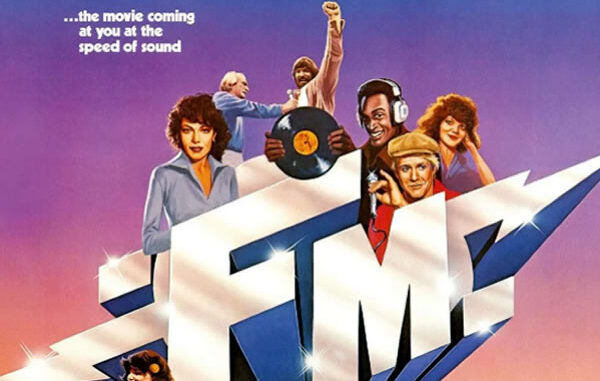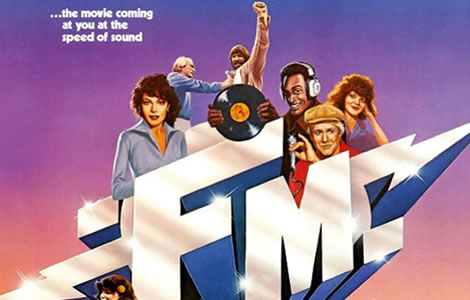
The late 1970s were a pivotal era for music and radio, especially in the United States, where FM radio reached its zenith. The film “FM,” released in 1978, serves as a nostalgic homage to the glory days of FM radio, capturing the essence of an era when DJs wielded considerable influence and rock music dominated the airwaves.

Directed by John A. Alonzo, “FM” offers a fascinating glimpse into the workings of a fictional California radio station, QSKY, and showcases the impact of the free-spirited, anti-corporate ethos that defined the best FM stations of the time.
The Movie “FM”
“FM” revolves around the lives of the staff at QSKY, a popular Los Angeles radio station, as they battle against corporate interests that seek to commercialise their station.
The film’s plot centres on the conflict between the station’s maverick DJs and the corporate suits who want to turn QSKY into a money-making machine by airing more commercials and limiting the DJs’ freedom to choose the music they play.
The protagonist, Jeff Dugan, played by Michael Brandon, is the station manager who leads the charge against the corporate encroachment.
Alongside him are a cast of colorful characters, including DJs who represent the diverse and rebellious spirit of the FM radio scene.
The film’s storyline reflects the broader cultural tensions of the time, highlighting the clash between artistic integrity and commercial interests.
“FM” features an ensemble cast, including Cleavon Little, Martin Mull, and Eileen Brennan, who bring to life the vibrant personalities that inhabited radio stations during the 1970s.
The film’s portrayal of the camaraderie among the DJs and their unwavering commitment to their music and listeners resonates with the real-life dynamics of FM radio stations of that era.
Steely Dan’s Soundtrack and the Iconic Track “FM (No Static at All)”
A significant highlight of the movie is its soundtrack, which includes a plethora of rock and pop hits from the time. Steely Dan’s contribution, the track “FM (No Static at All),” stands out as the film’s unofficial anthem.
Written by Donald Fagen and Walter Becker, “FM” perfectly encapsulates the smooth, sophisticated sound that Steely Dan was known for, blending jazz, rock, and pop influences.
The lyrics of “FM (No Static at All)” celebrate the clarity and fidelity of FM radio, contrasting it with the “static” of AM broadcasts.
The song’s smooth grooves and polished production mirrored the high-quality audio experience that FM radio provided, which was a significant factor in its popularity.
Steely Dan’s involvement in the soundtrack added a layer of authenticity to the film. Known for their meticulous production standards and complex musical arrangements, Steely Dan was emblematic of the kind of high-quality music that FM stations prided themselves on playing.
Their track not only served as a musical highlight but also reinforced the film’s themes of artistic freedom and resistance to commercialization.
The Music Scene of 1978-1979
The years around the release of “FM” were vibrant and transformative for the music industry. The late 1970s saw a diverse array of musical genres coexisting and influencing each other, from disco and punk to rock and the burgeoning new wave movement.
Artists like The Bee Gees, Fleetwood Mac, The Eagles, and David Bowie were at the height of their popularity, and their music was a staple of FM radio playlists.
1978, in particular, was a banner year for album-oriented rock (AOR), a format that FM radio stations had popularized.
This format focused on playing tracks from albums rather than just the hit singles, allowing listeners to experience the full range of an artist’s work.
This approach to programming was a stark departure from the more commercial, single-driven format of AM radio.
The Glory Days of FM Radio
FM radio’s golden era was marked by its commitment to sound quality and programming diversity.
Unlike AM radio, which often suffered from poor sound quality and limited musical variety, FM stations offered stereo sound and an expansive range of genres. This made them the go-to choice for music aficionados who craved a richer listening experience.
FM radio stations also provided a platform for DJs to showcase their personalities and musical tastes, fostering a sense of community among listeners.
The DJs were often seen as tastemakers and cultural influencers, guiding their audiences through the latest musical trends and hidden gems.
The film “FM” captures this spirit of innovation and rebellion, portraying FM radio as a cultural force that championed artistic integrity and resisted corporate control.
This ethos resonated with the broader cultural movements of the time, which valued individuality and creative expression.
FM – the inspiration for Capitol fm, the World Station
“FM” is more than just a film about a radio station; it is a tribute to an era when FM radio was a dominant cultural force in the United States.
The movie, with its engaging storyline and memorable soundtrack, including Steely Dan’s iconic track “FM (No Static at All),” encapsulates the essence of the late 1970s music scene. It celebrates a time when FM radio provided a platform for diverse musical genres, high-quality sound, and a sense of community among listeners and DJs.
In doing so, “FM” immortalises the glory days of FM radio, a period when it was more than just a medium—it was a movement.
